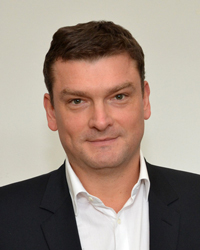Just £10 can buy a stake in a Burgundy vineyard, explains CEO Der Megreditchian
Philippe der Megreditchian is the managing partner of OLMA Private Equity, a Paris-based fund and owner of high-end Burgundy wine Domaine Chanzy. Last February, OLMA revealed it had opted for an original mode of fundraising for the projected development of Chanzy into a global luxury brand, with a listing on the London Stock Exchange’s Alternative Investment Market (AIM) via crowdfunding platform Seedrs.
In addition to institutional investors, the IPO should target wine-savvy retail shareholders who will be able to invest as little as £10 ($15) without the hassle of setting up a trading account.
The firm has just announced it would be acquiring another French wine producer in an equity-based transaction, and that the company's public debut was therefore postponed.

Philippe der Megreditchian, OLMA Private Equity
IR Magazine: Tell us a bit about OLMA.
Philippe der Megreditchian: We are a small private equity fund specializing in the luxury sector. Two and a half years ago we identified the wine market as one of the most validated and well-known segments within the luxury sphere. Burgundy is the region where the world’s most expensive wines are produced, but this market hasn’t seen the same evolution as Champagne or rosé wines, where products have been institutionalized.
If you look at the Champagne market, for example, there has been a lot of work around packaging, marketing and distribution. For Burgundy wines, which are the most interesting from a qualitative point of view ‒ they are among the world’s 50 most expensive wines, 37 of them from Burgundy ‒ the main focus has been on product and content, without the marketing work that creates a high-quality product into a luxury product.
So we had a look at the Burgundy market, but there was absolutely nothing for sale! If you are a wealthy Chinese, Russian or Brazilian investor and you want to make wine an expensive hobby, you can easily do it in other parts of the world, but not in Burgundy.
The former owner sold his domaine to a Parisian entrepreneur involved in sports events who eventually went bankrupt. We seized the opportunity to buy the firm out of receivership, outbidding 50 other candidates.
How did you come up with the original idea of listing Chanzy on AIM via crowdfunding?
The idea came quite naturally. We initially worked with French small-cap financing platform Alternativa. Because we want to create a luxury brand, we quickly realized we needed to raise a substantial sum to invest in its development. We made three successive fundraising rounds with French crowdfunders via Alternativa, raising €2.2 mn ($2.4 mn) over 18 months. This allowed us to remain independent, while creating a strong and balanced relationship with our investors. Shareholders get the benefit of a tax break and wholesale prices, while helping to developing a sector they like, and they’re also both consumers and promoters of the end product. We believe people prefer to drink their own wine rather than someone else’s! We have 350 French investors, though our aim is to become a global luxury brand.
To do so, we brought in a whole new management team. We’ve put a focus on export, growing it from 4 percent initially to 15 percent-17 percent. This year it should be 25 percent with an objective of achieving 80 percent of turnover from exports. We seek to reach a global clientele by developing the brand and its distribution. In addition to our wine-making activities, we also buy the best grapes in Burgundy to produce our nine ‘grand crus’ and nine ‘premiers crus’, investing €1.5 mn each year. We plan to develop the business by purchasing additional grapes from high-quality vineyards.
Was the business difficult to set up?
Yes. Wine making is an ancestral profession. Whereas Bordeaux or Côtes du Rhone wines are made from an assemblage of different grape varieties, Burgundy wine has the fundamental aspect of being made from a single variety, so it’s the personal work of the winemaker, and that’s what makes the quality of the wine. Our goal is to institutionalize the brand and the business and sell high volumes, so it’s all about finding the right balance between tradition and the product the consumers want to buy. We aim to produce 250,000 bottles yearly.
How did you go about marketing the upcoming IPO?
Our roadshow was a series of wine tastings to introduce our team and products. We did four events in London and had brokers organize one-on-one meetings with potential institutional investors. We organized a marketing event with Seedrs, the London-based crowdfunding platform that is acting as a nominee for the listing. Its added value for us is viral marketing via the internet and press coverage.
Who will be handling IR at the newly listed firm?
We’re a small organization with only 19 people. Our priority is our vineyard, our products and selling it at the best price. IR isn’t our job – Seedrs takes care of that.
Any new similar transactions in the pipeline?
We’re now in advanced discussions to merge Chanzy with another vineyard of similar size. We’re seeking to offer our clients and investors a large range of products, by creating a project called ‘la Route des Vins’, including top-quality red, white, rosé and Champagne offerings.









